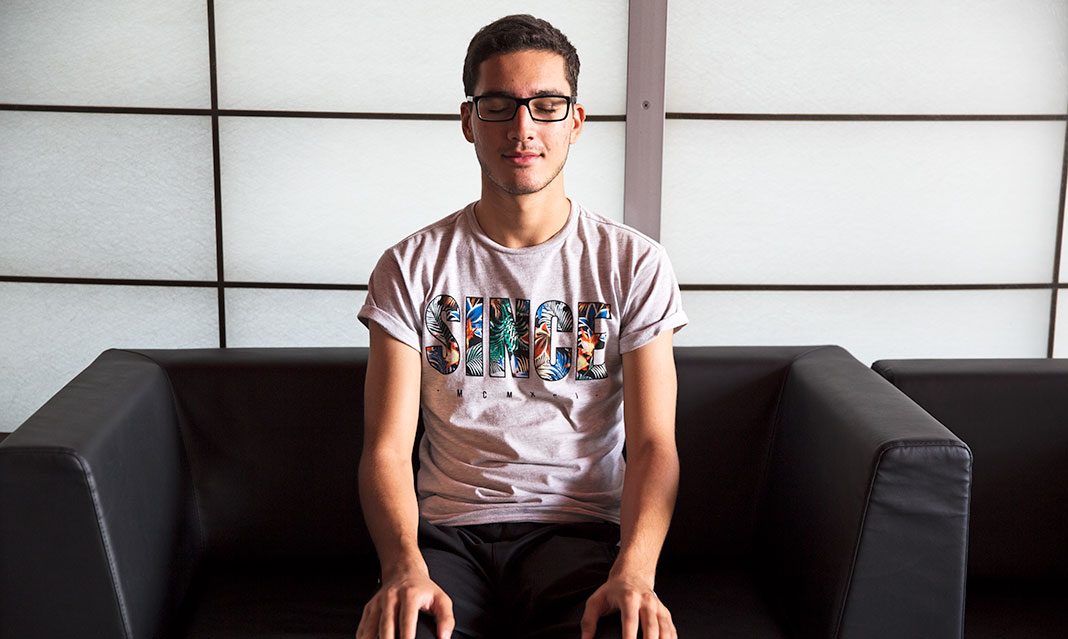When the August bliss starts to fade and September comes onto the scene, those first weeks of the new school year can quickly become overwhelming. In an effort to combat stress, UTM’s Health and Counselling Centre launched a brand new drop-in Mindfulness Meditation class, held in the RAWC’s multi-purpose room on Wednesdays from 12-1 p.m.
Although I had no prior experience meditating before attending Wednesday’s class, I still hoped that I would emerge from the session with an unwavering inner peace, and perhaps some mental superpowers.
Wednesday’s meditation group included about 10 students. Some had just come from the gym, but others came straight from class. The group is led by a different member of the health and counselling staff each week on a rotation. So, depending on the instructor, each week might differ slightly in the meditation exercise as well as the overall tone of the session.
Sitting cross-legged on mats with the lights turned down, we began the class by simply closing our eyes and paying attention to our breathing for five minutes, a relatively common relaxation technique. It seemed easy enough, but every now and then my mind would wander and I would forget what I was doing.
After a lengthy five minutes, we headed into the focus of the session, which was a “body scan” that lasted about 30 minutes. We laid down on our backs, and our instructor asked us to concentrate on each body part, one at a time. No body part was too insignificant. After “scanning” each part, we were asked to imagine the body part dissolving. We worked through each body part, until I felt the tingly numbness that comes from such an acute awareness of one’s body.
Throughout the session, the emphasis on mindfulness came in the form of acknowledging our emotions, accepting how we felt, and suspending all judgments. I would say the session was more therapeutic than relaxing, simply because we were continuously encouraged to remain in the present.
Did I achieve inner peace? Not quite. Since it was my first time, it was hard to keep my mind clear the entire session and not fall asleep. Mindfulness meditation is not a one-time, fix-all strategy for stress relief. The more you do it, the more you’ll achieve in each session, and the easier it becomes. I didn’t find the session quite as helpful as a high-intensity workout is for stress relief—but everyone has a unique way to manage stress, and meditation is just one method. Regardless, I did walk out of the class with a huge smile and the feeling like nothing could touch me.
There are a host of apps on the market that attempt to teach this technique. UTM’s own psychology professor, Norman Farb, consulted on Toronto-based Mobio Interactive’s meditation app Wildflowers Mindfulness, which allows users to follow guided meditations and monitor their state of relaxation by comparing their thumb print or face colour before and after meditating.
Other apps include the highly-acclaimed Headspace, which provides 10-minute beginner meditation sessions for different aspects of life. Several apps come in the form of videos or games combined with a relaxing soundtrack.
The biggest difference I’ve noticed between meditation apps and attending an in-person mindfulness and meditation class is the level of commitment I give to the exercise. In a room meant for meditating with an instructor guiding me, it’s easier to remain focused, since there isn’t any potential for distractions or intrusions. Classes might help prevent beginner meditators from simply giving up when things get a little boring. I also enjoyed the fact that when I went to the meditation class, I left my phone behind. For me, a phone is a sign of stress, and it’s wonderful to set aside time to be away from it.
In a promotional post on the Headspace website, clinical sport psychologist Kristin Keim notes that stress reduction, improved sleep patterns and recovery times, enhanced endurance, and an improved sense of identity are four reasons athletes should be willing to give meditation a chance. She adds, “The practice can help athletes through injury, as well as overcome challenges such as the transition back into sport or out of sport.”



